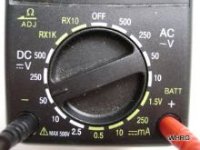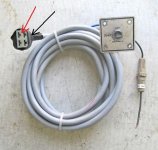I have an AQ131A-275 outdrive. My engine starts right up and runs strong when scooting about on the lake. The temperature stays right where it should, according tho the thermostat on the dash. However, the boat does not like to idle or cruise around slowly. If I do, the engine will die and I will have to sit and wait 45 min to an hour. Yesterday I went on a test run after installing a new ignition switch. I was motoring in a bay going very slow. The engine temperature did not rise. The engine just cut out.
When I turned the key, I got nothing. Not a click or sound of any kind. The engine temp was not up. The fuel lines felt fine. The coil, however, was very hot. After about an hour, I turned the key, got nothing, turned it again and it started right up.
I ran down the lake to the dock, again started going very slow. After a while, it tried to die and I pumped the throttle and was able to keep it going with the rpms up.
The PO told me he installed electronic ignition and got rid of teh points and condenser. Based on other things, he may not have doe it correctly.
Any ideas? The wife will not come out on the lake with me and it is hard to pick up skiers without going into idle.
When I turned the key, I got nothing. Not a click or sound of any kind. The engine temp was not up. The fuel lines felt fine. The coil, however, was very hot. After about an hour, I turned the key, got nothing, turned it again and it started right up.
I ran down the lake to the dock, again started going very slow. After a while, it tried to die and I pumped the throttle and was able to keep it going with the rpms up.
The PO told me he installed electronic ignition and got rid of teh points and condenser. Based on other things, he may not have doe it correctly.
Any ideas? The wife will not come out on the lake with me and it is hard to pick up skiers without going into idle.



